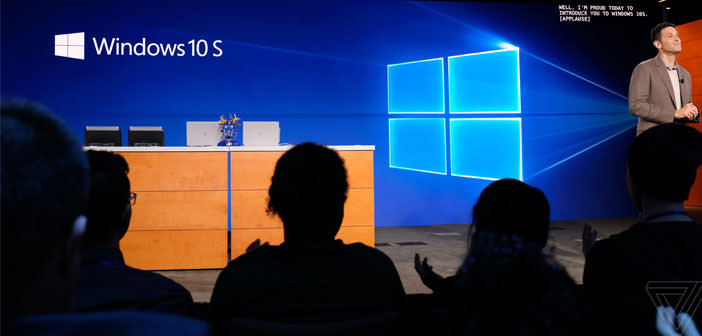Windows 10 S: Other things you cannot do
Although Microsoft has not officially specified it, there are other things – in addition to those announced – that Windows 10 S can not do.
Windows 10 S is a version of Microsoft’s simplified operating system to be safer and more reliable than the traditional variant. Currently, it is distributed only with Surface Laptop, and we are waiting to see which feedback will be in the end user, but Microsoft is certainly not outspoken in explaining what features, features and, above all, the limitations of the latest SKU announced in chronological order.
The main point of differentiation between Windows 10 S and standard operating system versions (Home and Pro, for example) is the obligation to run only and exclusively the apps that are published on the Windows Store. This is because all the official store apps are certified by Microsoft, so they are absolutely safe to use. The user cannot even make the so-called side-load of the UWP app (not even the private ones). The user cannot even install Win32 apps, which is not to be considered an absolute evil if we consider the target to which Windows 10 S is addressed, so students or former Chromebook users. UWP apps progressively increase in the number, and some traditional Win32 apps have long appeared on the store, which can then be used with Windows 10 S. There will be missing unstructured browsers such as UWP, then-current Chrome and Firefox.
The user cannot even install Win32 apps, which is not to be considered an absolute evil if we consider the target to which Windows 10 S is addressed, so students or former Chromebook users. UWP apps progressively increase in the number, and some traditional Win32 apps have long appeared on the store, which can then be used with Windows 10 S. There will be missing unstructured browsers such as UWP, then-current Chrome and Firefox.
These are the main limitations that were known to date, but ZDNet has thoroughly found out that there are other restrictions that Microsoft has not yet properly communicated, including the impossibility of using the Registry Editor, the Powershell, Command Prompt, and more. Windows 10 S ” blocks execution ” of these items, writes the source, listing executables that cannot be managed on the new Windows 10 SKU.
Among these: bash.exe, cdb.exe, cmd.exe, cscript.exe, csi.exe, dnx.exe, kd.exe, lxssmanager.dll, msbuild.exe, ntsd.exe, powershell.exe, powershell_ise.exe , rcsi.exe, reg.exe, regedt32.exe, windbg.exe, wmic.exe, wscript.exe. Additionally, some types of apps, such as third-party antivirus software, backup and storage programs, and storage units installed on the system will not be allowed on the store.
With Windows 10 S, you will not be able to access a Windows domain, with a computer that cannot be managed through Microsoft’s Active Directory. In short, more experienced users may feel limited with Windows 10 S, and not only because of the impossibility of installing apps from unofficial sources, but also because they will not be able to access tools that the most frequently-used user usually uses with some regularity.
But this is the point at Windows 10 S, which is to offer a system that cannot be compromised with regard to security and functionality. In other words, it cannot break. It is a middle ground between Chrome OS and Windows and is mainly intended for low-end computers. Of course, Microsoft’s move to introduce it first on its premium laptop has spared a bit of users, but it is undoubtedly the destination for use of the new SKU.

